The Forest’s Built Heritage transformed
Our ‘Built Heritage’ project, has delivered several successful small-scale conservation and building preservation works on a number of key heritage sites in the Forest of Dean this year.
Many of our Built Heritage sites have become overgrown by vegetation and are gradually crumbling away as the Forest grows over the sites. So this year we chose some of the most important ones that could benefit from conservation works. These have included:
Darkhill Ironworks & Titanic Steelworks
This site near Ellwood is a Historic England Scheduled Monument because this is where British Steel started, with the pioneering work by metallurgist David Mushet and his son Robert Forester Mushet (1811-1891). It is a significant claim to fame for our Forest and a fascinating story - you can find out more by downloading the free ‘Coleford’s Hidden Heritage app’ or by visiting the site, near Ellwood/Gorsty Knoll. The remaining structures are now easier to see because of bracken and ivy clearance. There have also been repairs to stone structures due to root damage and weathering, including repairs to rotten wood shoring. Some reinstatement of walls is planned for the coming months. This provides an interesting site to visit, where our built and natural heritage interacts. You can see the transformative effect in the images below at Darkhill, contrasting 2019 with May 2020.

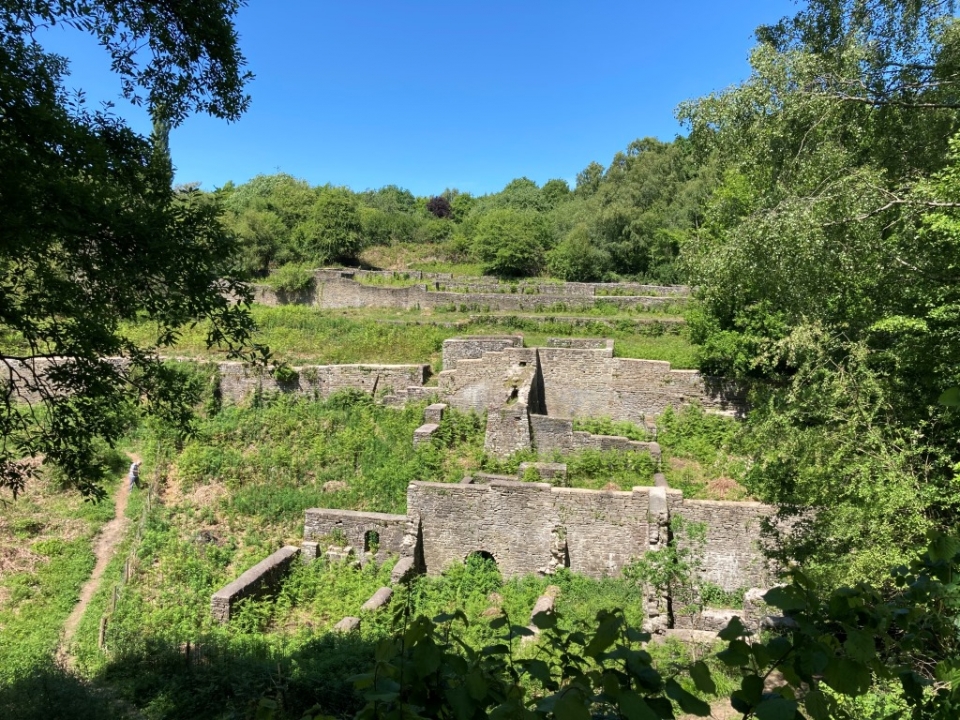
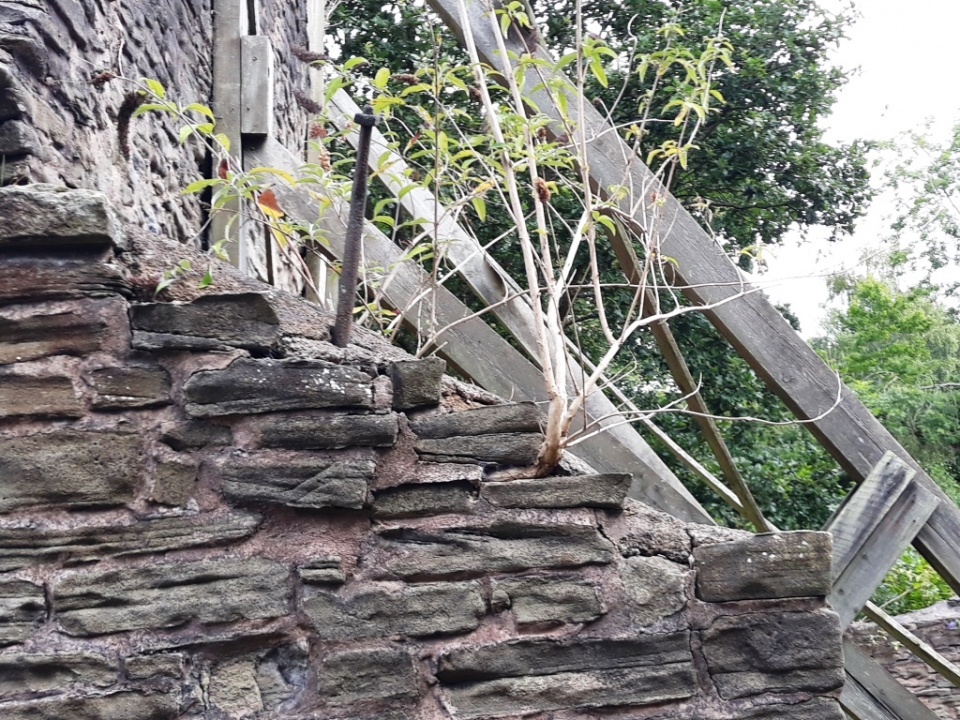
Trafalgar Colliery
This site also has a significant claim to fame in that it was the first in the world to use electricity for motive power underground when Sir Francis Brain installed electrically driven pumps in 1882. In addition to the obvious benefits of electric light over candles and gas, electricity could be supplied to all parts of the colliery via small flexible cables instead. The advance in safety and productivity was huge. There is very little to be seen at the site of the colliery (in the Woods near Brierley) nowadays but there is the base of a chimney remaining (pictured top of this page also). The conservation works included excavation of the chimney base and rebuilding it partially by salvaging stones from around the site, and replacing capping stones. You can find out more by downloading our free ‘Hidden Heritage of the Dean’ app.
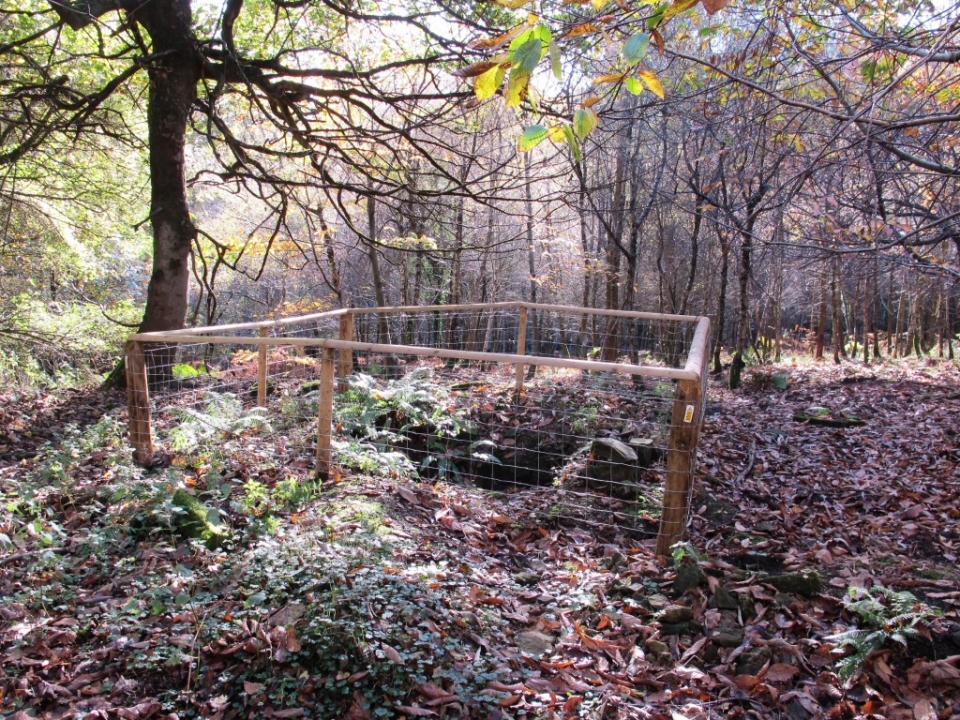
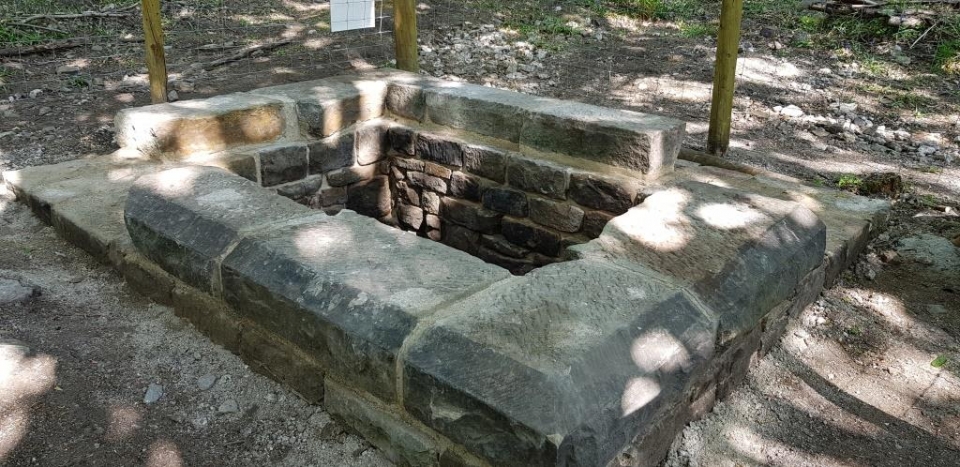
Blakeney Limekiln
This is representative of the many limekilns in the area that used the local materials of limestone and charcoal to produce useful products such as quicklime (used to make lime mortar for buildings or lime for agricultural purposes). Nowadays limekilns can be favourite haunts for bats so works have to be completed in a way that is sympathetic to them. The works here included vegetation clearance, lime mortar repairs and soft capping, the arch rings have been re-built and pointed and fencing is due to be installed to complete the work.
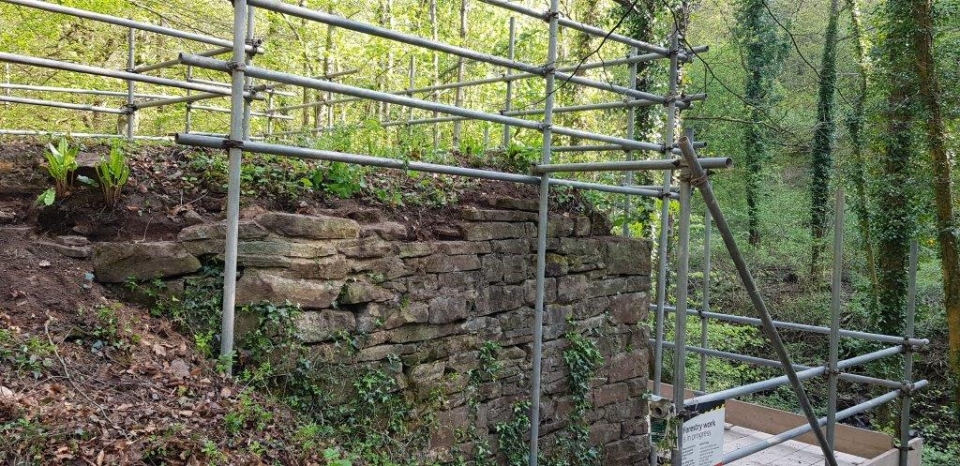
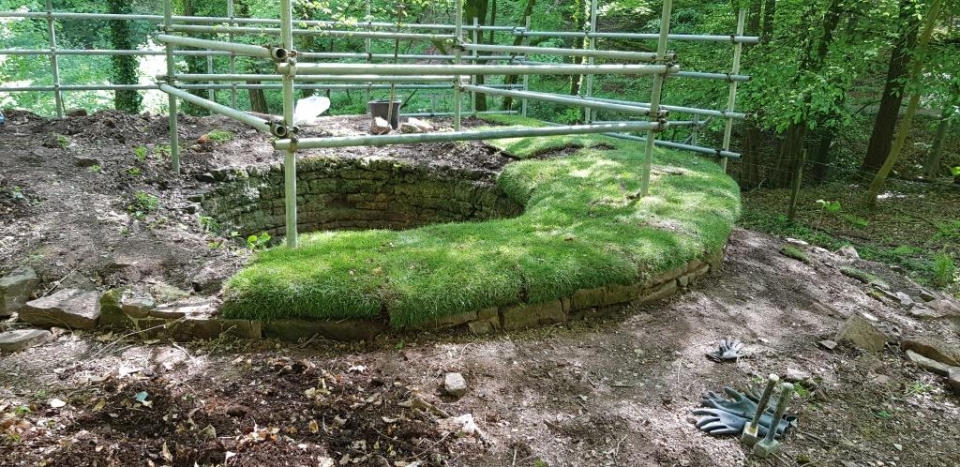
All this work has been completed in partnership with Natural England, Historic England and local contractors J Etherton Building Conservation Ltd, under the supervision and instruction of consultant Martin Beale, Foresters’ Forest and Forestry England, funded by the National Lottery Heritage Fund. The work carried out so far is valued at approximately £42,000.
Sue Middleton, our Programme Manager comments:
“I know many people enjoy exploring our Forest and coming across the remains of our heritage and wondering what it was and how it was used and who worked there. It is thanks to the specialist knowledge of some local Foresters that helped us focus our funding on conserving important sites that help tell the story of our Forest.”
Simon Moore, Conservation Officer for the Forest of Dean Local History Society, said:
“It is so important that we look after the remaining traces of our past industrial heritage and it is very exciting that Foresters’ Forest has enabled this work to take place. I visited the lime kiln in Blakeney recently and was very impressed with the sensitive way the repairs had been carried out and how the site has been transformed. I look forward to other sites progressing in the next year or so.”
Find out more: the Built Heritage project